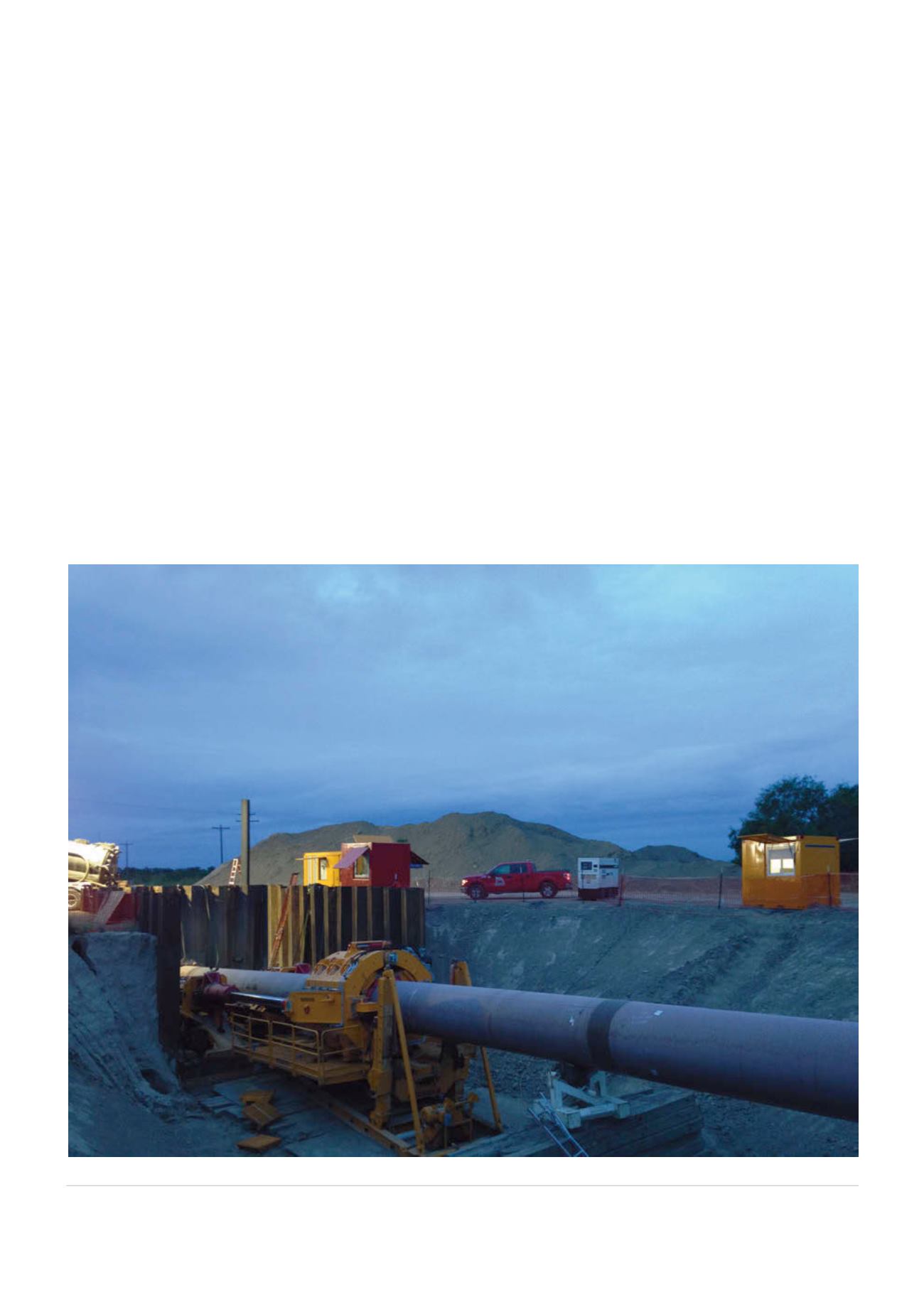
NET Mexico contracted Michels Directional Crossings,
a division of Michels Corporation based in Brownsville,
Wisconsin, to tackle the border crossing. The crossing was a
pivotal part of the 124 mile compressed natural gas pipeline it
built to serve Mexico’s expanding energy market.
International border crossings are unique, and have a number
of challenges when designing, permitting and constructing that
take a great deal of time to manage. These challenges are above
and beyond the length and geology of the crossing itself. This
project once again tested the limits of this emerging technology
and motivated Michels to continue developing innovative new
ways to meet its customers’ trenchless needs.
HDD vs Direct Pipe
Initially, both horizontal directional drilling (HDD) and Direct
Pipe were considered for installation of the 48 in. pipe under
the Rio Grande, which is 755 ft wide at the location of the
crossing.
Ultimately, Direct Pipe emerged as the preferred option for
several reasons:
)
)
Environmental. The project started and ended within
850 ft of the Rio Grande, a significant 1900 mile river
that journeys from the Rocky Mountains in Colorado to
the Gulf of Mexico. Congress designated the Rio Grande
as a National Wild and Scenic River System to protect
its resources, which are the lifeblood of the deserts it
winds through. Compared to other trenchless installation
methods including HDD, Direct Pipe has a low risk of
inadvertent fluid spill, which was particularly desirable for
this project. Access issues related to the border crossing
and the river would have made it difficult to alleviate
unintended fluid spills.
)
)
Ground conditions. Geology along the alignment consisted
of silt, sand, gravels and clays, which are suitable Direct
Pipe, but not as desirable for HDD. The slurry-supported
one-pass Direct Pipe method uses the microtunnel
machine and the pipeline to provide permanent borehole
support, reducing the risk of subsiding ground along the
bore path and increasing the chances for a successful
crossing.
)
)
Deployment. Direct Pipe is a particularly good option for
international border crossings because it can alleviate
some of the many challenges associated with having
crews work on both sides of the border. All Direct Pipe
Figure 2.
Direct Pipe operations were conducted from the Texas side of the US-Mexico border.
114
World Pipelines
/
JUNE 2015


